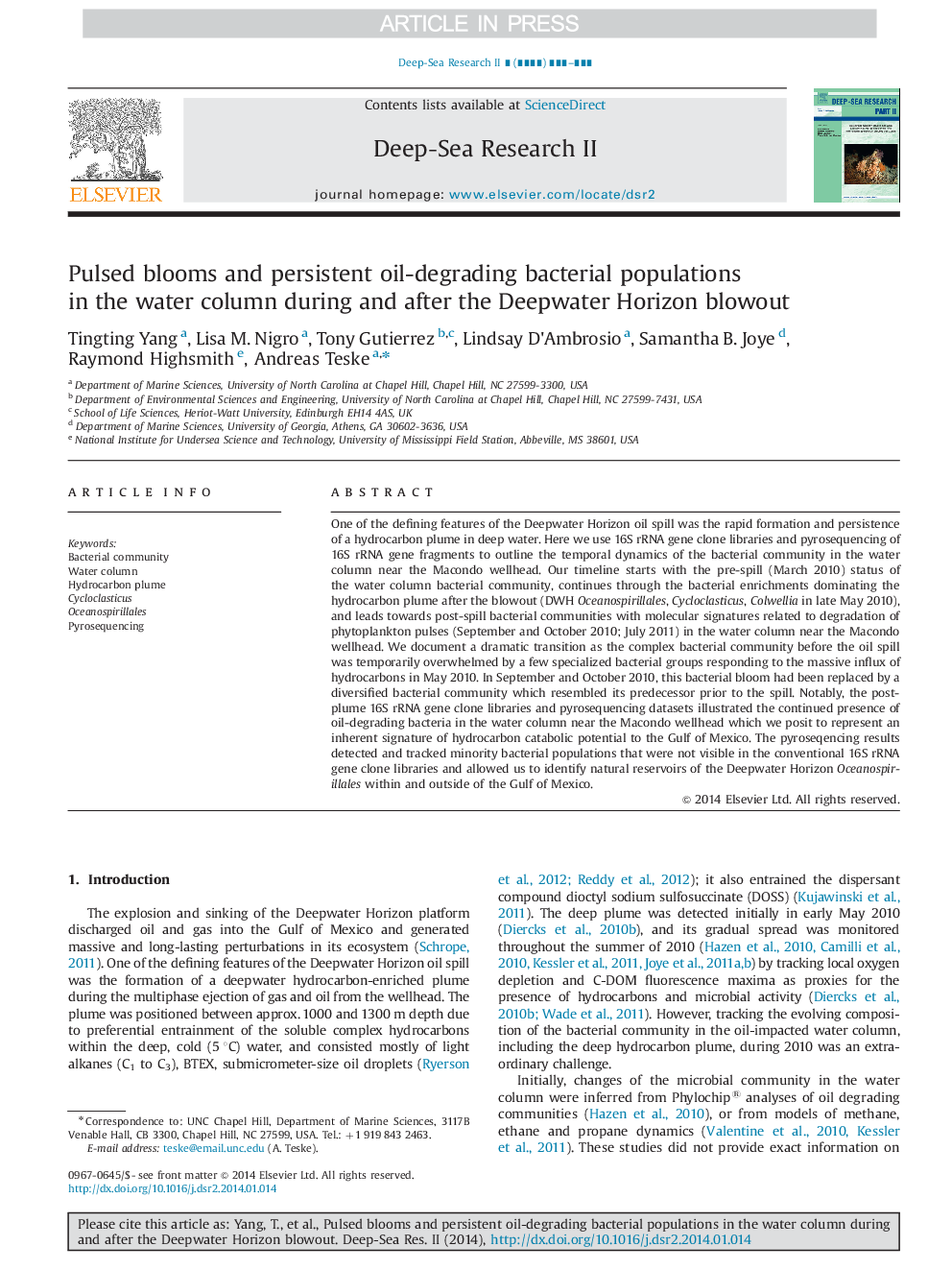| Article ID | Journal | Published Year | Pages | File Type |
|---|---|---|---|---|
| 6383964 | Deep Sea Research Part II: Topical Studies in Oceanography | 2016 | 10 Pages |
Abstract
One of the defining features of the Deepwater Horizon oil spill was the rapid formation and persistence of a hydrocarbon plume in deep water. Here we use 16S rRNA gene clone libraries and pyrosequencing of 16S rRNA gene fragments to outline the temporal dynamics of the bacterial community in the water column near the Macondo wellhead. Our timeline starts with the pre-spill (March 2010) status of the water column bacterial community, continues through the bacterial enrichments dominating the hydrocarbon plume after the blowout (DWH Oceanospirillales, Cycloclasticus, Colwellia in late May 2010), and leads towards post-spill bacterial communities with molecular signatures related to degradation of phytoplankton pulses (September and October 2010; July 2011) in the water column near the Macondo wellhead. We document a dramatic transition as the complex bacterial community before the oil spill was temporarily overwhelmed by a few specialized bacterial groups responding to the massive influx of hydrocarbons in May 2010. In September and October 2010, this bacterial bloom had been replaced by a diversified bacterial community which resembled its predecessor prior to the spill. Notably, the post-plume 16S rRNA gene clone libraries and pyrosequencing datasets illustrated the continued presence of oil-degrading bacteria in the water column near the Macondo wellhead which we posit to represent an inherent signature of hydrocarbon catabolic potential to the Gulf of Mexico. The pyroseqencing results detected and tracked minority bacterial populations that were not visible in the conventional 16S rRNA gene clone libraries and allowed us to identify natural reservoirs of the Deepwater Horizon Oceanospirillales within and outside of the Gulf of Mexico.
Related Topics
Physical Sciences and Engineering
Earth and Planetary Sciences
Geology
Authors
Tingting Yang, Lisa M. Nigro, Tony Gutierrez, Lindsay D׳Ambrosio, Samantha B. Joye, Raymond Highsmith, Andreas Teske,
